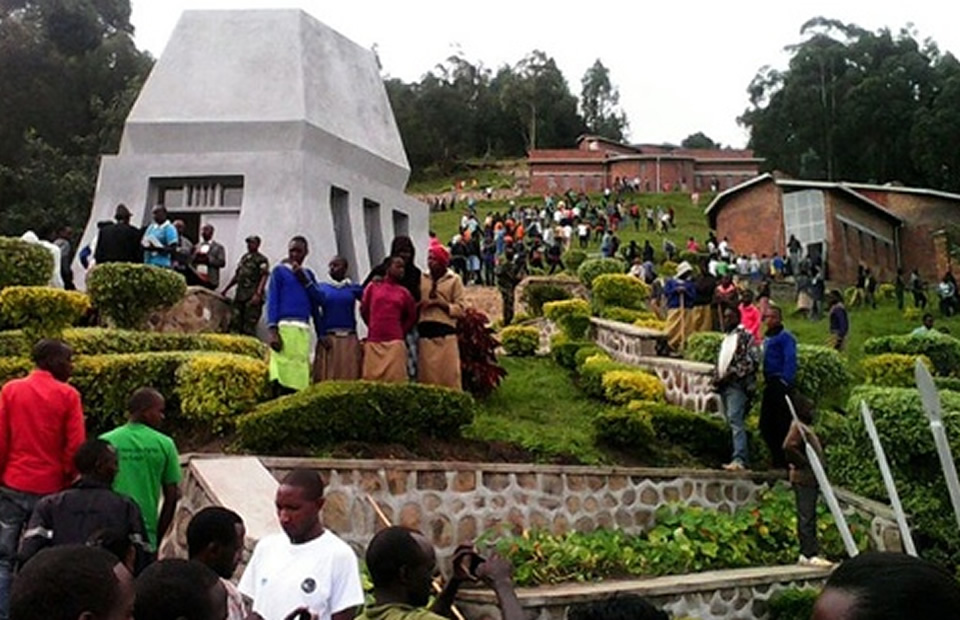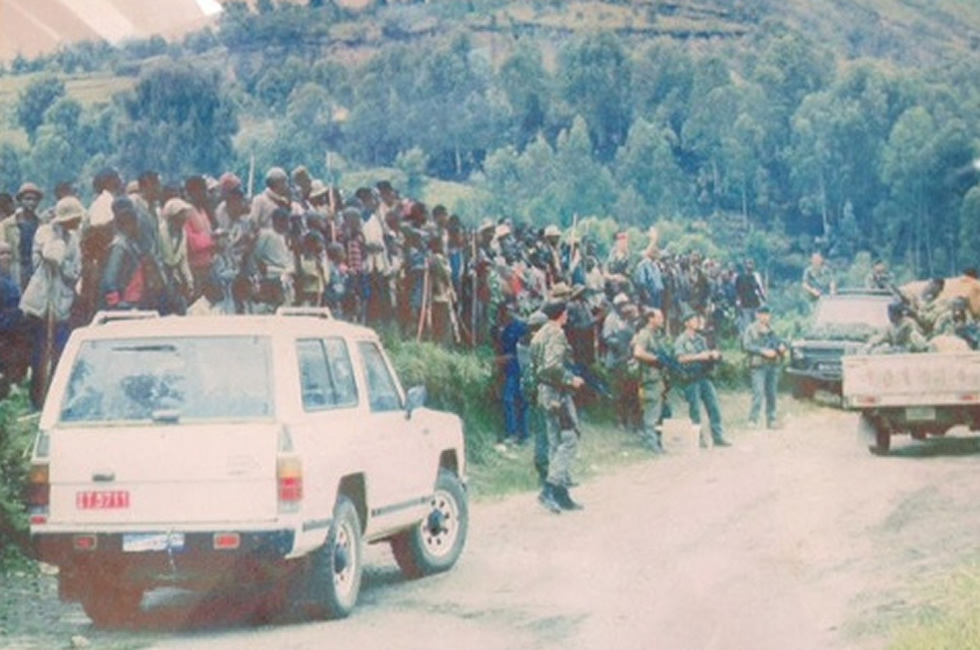On June 25, 1994, Boniface Higiro was 19 years. At around 11:00am, a convoy of military and white civilian vehicles drove uphill towards Bisesero, located in Western Rwanda.
“We saw white people calling us to come down as they were here to rescue us,” narrates Higiro, now 40 years. And they did come out hoping for protection.
Boniface Higiro is one of the 900 surviving Tutsis from what turned out to be one of the worst mass extermination projects in which tens of thousands of Tutsis were lured to their death by French troops.
Twenty one years later, after the Genocide against the Tutsis, he still has vivid recollections of the few days that will remain ingrained in his memory forever.
Bisesero located in the hilly region of Kibuye prefecture, today’s Karongi District. Before the genocide began en-mass on April 6, 1994, it was considered to have more Tutsis than Hutus, according to an academician, Dr Jean Damascene Bizimana.
It was target of the ex-government forces and genocide Interahamwe militias. Despite months of reinforcements, Tutsis armed with stones, sticks and anything they could get hold o, battled for survival to counter mass attacks.
Hundreds died due to the overwhelming power of the attacks coordinated from the highest levels of the interim government led by Theodore Sindikubwabo.
Survivors including Kwigize Jean, say that the militias who were brought from adjacent regions and began occupying the hill tops. It was from there that they strode downhill armed with the most crude weapons and guns to clear out all Tutsis.
Tutsis then organized themselves into coordinated resistance groups. “We knew for years that one day extremists will come to exterminate us, and indeed they did” says Kwigize. “There were only two options; fight the killers or wait to be wiped out.”
Three French journalists
The former Finance Finance, Emmanuel Ndindabahizi, is serving life sentence for his role providing a constant supply of weapons for militias to head to Bisesero. Convicted Aloys NDIMBATI, the bourgmestre of nearby Gisovu commune also availed government vehicles that ferried the militias to Bisesero.
Up until June, Tutsis in Bisesero fought running battles pushing the militia onslaught up the hills, as the latter moved down clearing anything with breathe.
Whenever they were overwhelmed, the militias retreated while burning up everything to deny food and hiding places for Tutsis.
Then on June 27, news spread quickly that white people had arrived in Bisesero.
Exhausted and hungry, many Tutsis were still alive. Higiro and Kwigize, with thousands others moved towards the French convoy.
The two remember very well seeing French commandos urging them to return to their homes and a camp was set up at the exact location.
The French soldiers were accompanied by government forces. Higiro and Kwigize say they pleaded with their visitors to either stay or be relocate to other regions. But as they cried for protection, militias and government soldiers laughed.
Within hours, the French told the crowding Tutsi survivors that they would return “tomorrow”, before driving off.
Three French journalists from three of France’s biggest media were on the convoy including Patrick de Saint-Exupéry. He has since published a series of award-winning publications about his time in the region.
Meanwhile, on the evening of the same day, survivors saw buses and military trucks driving towards Bisesero from all directions.
From a distance, the occupants sung and chanted as though they were heading for a big celebration. The final assault on Bisesero was being prepared.
As the massacre went on in Bisesero region, Patrick de Saint-Exupéry writes that on June, 29, French Prime Minister Edouard Balladur and Defense Minister François Léotard arrived in Kibuye to visit their troops.
Saint-Exupéry reportedly asked the two officials in an unscripted exchange what was going to be done for Tutsis holed up the mountains.
“We will go there,” responded Balladur, according to Saint-Exupéry’s account. “…tomorrow, we will go there.”
Hope from horror

Data from UN indictments which led to conviction of several government officials and businessmen for their role in the Bisesero massacre shows that internal planning had set June 30, as the deadline to “finalise work in Bisesero”. It was the date by which no Tutsis would be left in the area.
French troops were part of a UN-mandated. The French contingent set up the infamous ‘Zone Turquoise’ covering Wester and some parts of Southern Rwanda.
As the photo taken 21 years ago shows, nothing much has changed in the exact location where it was taken by a civilian member of the convoy.
About 300m away is the magnificent Bisesero genocide memorial site built on one of the hills.
The embarrassing photo, along with the remains of the tens of thousands of victims, is laid to rest inside the memorial.
On March 21, 2015, more than 700 orphans from different parts of the country made the emotional journey back to Bisesero.
The orphans grouped in the Association of Student Genocide Survivors and former students cleaned the memorial site, built a new house for a vulnerable survivor and rewarded two individuals for saving Tutsis.
An elderly woman who hid Tutsis and watched her husband killed, was rewarded with a cow. The military also promised her to a well-furnished house.
Today, the population of Bisesero is largely comprised of frail elderly people and some in their 40s, all of whom are males.
The old, women and children who could not survive the militia assault, hunger and disease, died during the horrific days of June.
